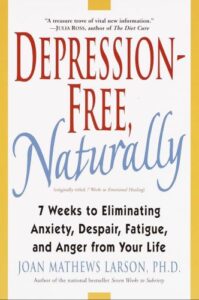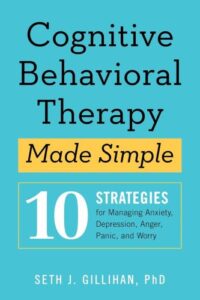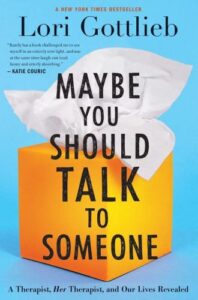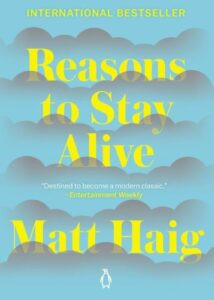Blink: The Power of Thinking Without Thinking
Book Author: Malcolm Gladwell
Summary reviewed by:
Terrence Timmons
Terrence Timmons
Analyst
Bachelor of Arts (BA), University Of California, Santa Barbara 2019
With over 4 years of experience as an analyst. Terrence Timmons is committed to analyzing summaries without compromising on quality.
Blink: The Power of Thinking Without Thinking: Summary
Discover the Hidden Forces Shaping Your Every Decision! In Blink: The Power of Thinking Without Thinking, Malcolm Gladwell unveils the astonishing capabilities of our unconscious mind, arguing that rapid cognition often trumps deliberate analysis. The central thesis posits that our snap judgments, made in the blink of an eye, can be remarkably accurate and influential in shaping our lives.
Grounded in psychological theories such as dual-process theory and thin-slicing, Gladwell explores how our brains process vast amounts of information swiftly and efficiently. He draws on groundbreaking research from experts like psychologist John Gottman and neuroscientist Gary Klein, providing a robust scientific foundation for his arguments. Gladwell’s reputation as a seasoned journalist and storyteller enhances the book’s credibility, as his ability to translate complex studies into engaging narratives makes the content accessible and compelling.
Blink approaches personal development by emphasizing the importance of trusting our instincts while also recognizing their limitations. Gladwell presents a realistic framework for harnessing intuitive thinking without falling prey to its potential biases. He suggests that by understanding the mechanics of our rapid cognition, individuals can make better decisions in both personal and professional contexts. Specific outcomes highlighted include improved relationship assessments, enhanced creativity, and more effective problem-solving abilities.
The book outlines several key strategies for leveraging snap judgments to foster personal growth and overcome challenges. One such method is “thin-slicing,” the ability to make quick inferences based on limited information. Gladwell illustrates this with examples like expert chess players anticipating opponents’ moves or art experts discerning genuine paintings from forgeries in seconds. Another strategy involves recognizing and mitigating the effects of unconscious biases that can distort our judgments, ensuring that our intuitive decisions remain sound and fair.
Gladwell guides readers in applying these strategies through practical advice and relatable scenarios. He introduces tools such as mindfulness techniques to heighten self-awareness and exercises to practice making swift decisions in low-stakes environments. By encouraging readers to reflect on their intuitive processes and understand the triggers that influence their judgments, Blink empowers individuals to refine their decision-making skills in everyday situations. Whether navigating interpersonal relationships, career choices, or creative endeavors, the book provides actionable steps to harness the power of quick thinking effectively.
Overall, Blink serves as a compelling exploration of the subconscious mechanisms that drive our immediate reactions and choices. Malcolm Gladwell masterfully combines scientific research with vivid storytelling to demonstrate that sometimes, the best decisions are made in an instant. By offering a balanced view of the strengths and pitfalls of rapid cognition, the book equips readers with the insights and tools needed to trust their instincts while remaining critically aware of their potential flaws. This nuanced approach makes Blink a valuable resource for anyone looking to enhance their intuitive abilities and make more informed, confident decisions in a complex world.
Blink: The Power of Thinking Without Thinking: Genres
Non-fiction
Psychology
Sociology
Self-Help
Popular Science
Blink: The Power of Thinking Without Thinking: Themes
Thin-Slicing: The ability to make quick inferences about situations or people with minimal information. Gladwell illustrates this through the story of art experts who can identify forgeries in seconds, demonstrating the power of rapid cognition in professional settings.
The Adaptive Unconscious: Explores how the unconscious mind processes information and influences decisions without our conscious awareness. The book discusses how firefighters make split-second decisions based on subconscious cues, highlighting the efficiency of the adaptive unconscious.
Priming and Influence: Examines how subtle environmental cues can significantly impact our thoughts and behaviors. An example is the study where individuals exposed to words related to elderly stereotypes walked slower, showcasing how priming can shape actions unconsciously.
Bias and Prejudice: Addresses the inherent biases that affect our snap judgments, often leading to unfair or inaccurate conclusions. Gladwell discusses the case of the Getty kouros sculpture to illustrate how unconscious biases can influence expert opinions and decision-making.
Decision-Making Under Pressure: Focuses on how high-stress situations impact our ability to think clearly and make effective decisions. The book recounts how soldiers and pilots rely on intuition and training to perform optimally under extreme pressure.
The Dark Side of Intuition: Highlights the potential pitfalls of relying solely on gut feelings, such as susceptibility to stereotypes and flawed judgments. Gladwell warns of scenarios where intuition can lead to errors, emphasizing the need for awareness and critical evaluation of our quick decisions.
Expertise and Intuitive Skill: Explores how experience and expertise enhance the accuracy of intuitive judgments. The narrative of chess grandmasters anticipating opponents’ moves demonstrates how deep knowledge and practice refine one’s ability to make swift, accurate decisions.
The Role of Context in Judgments: Investigates how the surrounding environment and situational factors influence our instantaneous assessments. Gladwell uses the example of marriage counselors making quick evaluations of couples to show how context shapes our intuitive responses.
Blink: The Power of Thinking Without Thinking: Methodology
In creating this summary, we utilized expert analysis to delve into Blink’s exploration of thin-slicing and the adaptive unconscious, uncovering Malcolm Gladwell’s key arguments and unique insights. By synthesizing these elements, we distilled the book’s pivotal themes and core messages into a clear, engaging narrative. Focusing on your experience, we highlighted practical applications of rapid cognition, demonstrating how intuitive decision-making can enhance everyday choices. This approach ensures that the summary is not only informative but also resonates with readers, providing actionable insights drawn directly from the book’s most compelling concepts.


Blink: The Power of Thinking Without Thinking
Date Published: January 11, 2005
Disclaimer: As an Amazon Associate I earn from qualifying purchases.




